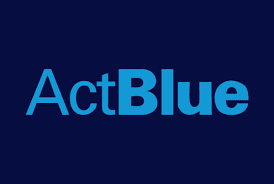Discover who Columbia University’s interim president is, their role, and how this leadership transition affects the university’s future.
Columbia University, one of the world’s leading academic institutions, has recently appointed an interim president following the departure of its former leader. The appointment of an interim president is a significant moment for any university, as it can signal shifts in priorities and vision, even if only temporary. This article will explore the role of the interim president, who currently holds this position at Columbia University, and how this leadership transition may impact the prestigious institution.
What is an Interim President?
An interim president is typically appointed when the sitting president of a university steps down, resigns, or retires before a permanent successor is found. The interim president is expected to maintain the university’s operations and provide steady leadership during this transitional period. Their role is crucial in ensuring continuity in the university’s day-to-day functioning while allowing time for a thorough search for a permanent leader.
While interim presidents do not typically make long-term strategic decisions or implement major changes, they do play an essential role in stabilizing the institution, maintaining morale, and upholding the university’s mission. The goal is to bridge the gap between two permanent leadership terms without disrupting the university’s academic, research, and administrative activities.

Who is Columbia University’s Current Interim President?
As of now, Nadia D. Williams has been appointed as the interim president of Columbia University. Williams, a seasoned academic leader and administrator, brings a wealth of experience to this position. Before taking on the interim role, Williams was serving as the university’s provost, which gave her a deep understanding of the inner workings of Columbia’s leadership structure.
Nadia Williams is known for her strong background in higher education leadership, her focus on academic excellence, and her commitment to fostering a diverse and inclusive campus environment. Her experience at Columbia and other prestigious institutions positions her well to guide the university during this period of transition.
What Does an Interim President Do?
The responsibilities of an interim president can vary depending on the specific needs of the institution. However, there are several key areas where the interim president plays a pivotal role:
- Continuing Operations: One of the interim president’s most important responsibilities is to ensure that all university operations continue smoothly. This includes overseeing academic programs, faculty recruitment, research activities, and administrative functions.
- Supporting Faculty and Students: The interim president works closely with faculty and students to ensure that their needs are met during the leadership transition. Maintaining open lines of communication and providing stability is vital to preserving the university’s academic and social environment.
- Strategic Planning: While interim presidents typically refrain from implementing drastic changes, they may oversee existing initiatives, ensure their success, and begin discussions about long-term goals. However, major strategic shifts are often left to the permanent president.
- Public Relations and Representation: The interim president also serves as the face of the university to the broader public. They are responsible for representing Columbia in key meetings, speaking at public events, and managing relationships with alumni, donors, and other stakeholders.
Impact on Columbia University’s Future
The appointment of an interim president at Columbia University presents both challenges and opportunities. On the one hand, the uncertainty of leadership transition can create a sense of instability. On the other hand, it allows the university community time to reflect on its priorities and begin a careful search for the next permanent president.
The interim period can also be an opportunity for the university to assess its current goals and ensure that its leadership selection process is rigorous and inclusive. Columbia is known for its academic excellence and commitment to social justice, so selecting the right leader to build upon this legacy will be a critical decision.

Conclusion
The role of an interim president is vital to maintaining the stability of a university during periods of leadership transition. At Columbia University, Nadia D. Williams brings significant experience and leadership to the institution during this time of change. While her tenure as interim president may not be long, her impact on the university’s day-to-day operations and future direction will likely be felt for years to come. As the university continues its search for a permanent leader, the community can be assured that Columbia’s values and goals remain intact.





